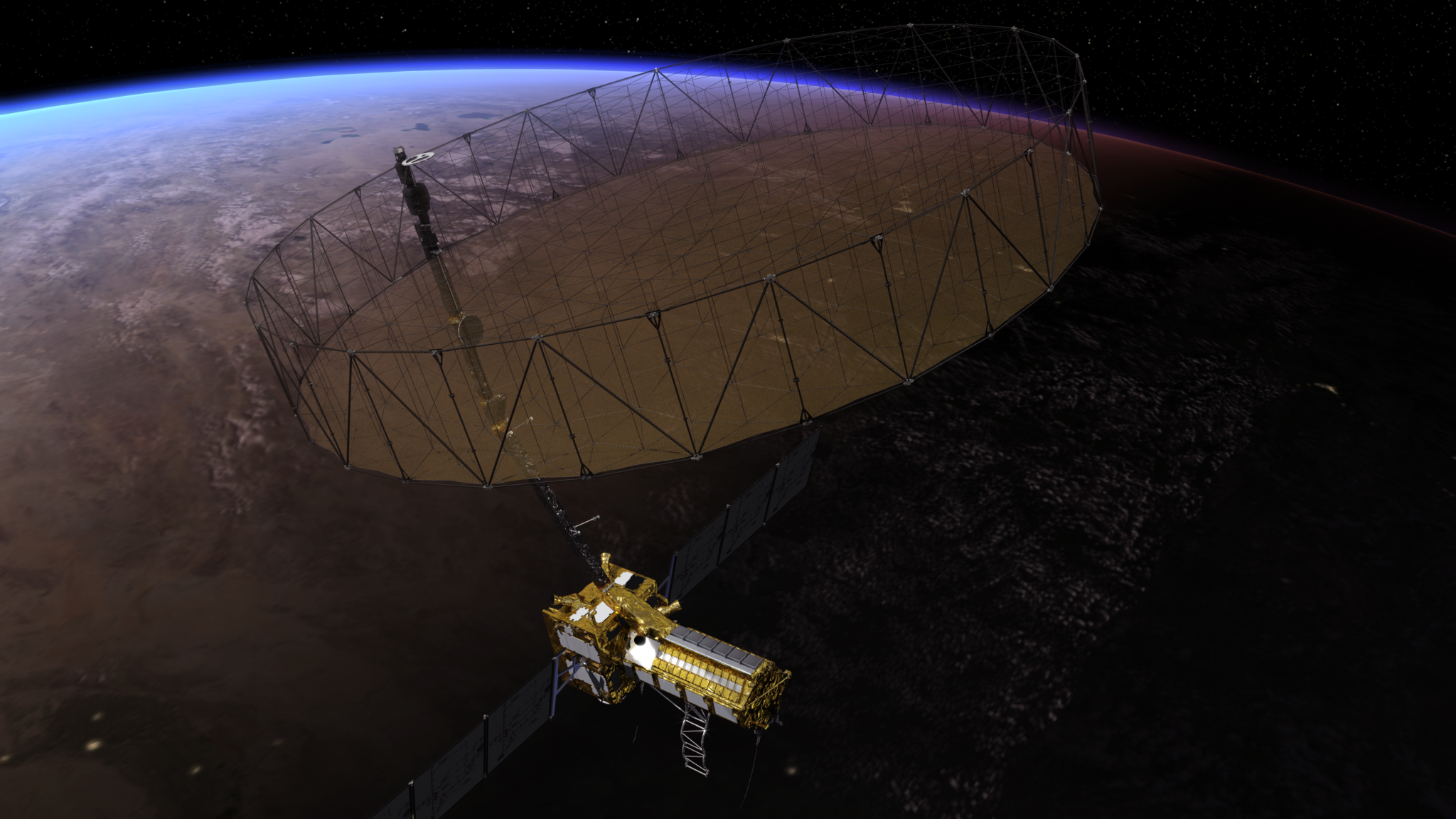News | March 26, 2024
Work Continues on NISAR Satellite as Mission Looks Toward Launch

Pictured in this artist’s concept, NISAR will use two radar systems to monitor change in nearly all of Earth’s land and ice surfaces. The satellite marks the first time the U.S. and Indian space agencies have cooperated on hardware development for an Earth-observing mission.
Credit: NASA/JPL-Caltech
The NISAR (NASA ISRO Synthetic Aperture Radar) satellite – a joint NASA-Indian Space Research Organisation (ISRO) Earth-observing mission – is nearly complete, and a launch readiness date will be determined at the end of April. The spacecraft will launch from the Satish Dhawan Space Centre on India’s southeastern coast.
Work to be finished before launch includes applying a special coating to hardware components on the satellite’s 39-foot-diameter (12-meter) radar antenna reflector, which is among NASA’s primary contributions to the mission. The addition of the special coating is a precautionary step to mitigate any temperature increases that could potentially affect the deployment of the reflector. Testing and analysis identified a potential for the reflector to experience higher-than-previously-anticipated temperatures in its stowed configuration in flight.
During science operations, the massive reflector will transmit and receive microwave signals to and from Earth’s surface, enabling NISAR to scan nearly all the planet’s land and ice surfaces twice every 12 days to collect science data.
The special coating being added will limit the temperature by reflecting more solar radiation off the reflector hardware. Due to the reflector’s size and complexity, it is being shipped from the ISRO site in India where the satellite is being assembled to a specialized facility in California for the application of the coating.
Once the thermal performance of the coating has been fully verified, a launch readiness date will be set. When the reflector returns to India, teams from NASA’s Jet Propulsion Laboratory and ISRO will integrate it onto the satellite.
NISAR, the first hardware collaboration between NASA and ISRO on an Earth-observing mission, is a uniquely powerful and trailblazing satellite. By combining two kinds of synthetic aperture radars, it will offer measurements of Earth’s evolving surface – including changes in ice sheets and glaciers, wetlands and forests, and land around volcanoes and earthquake faults.
